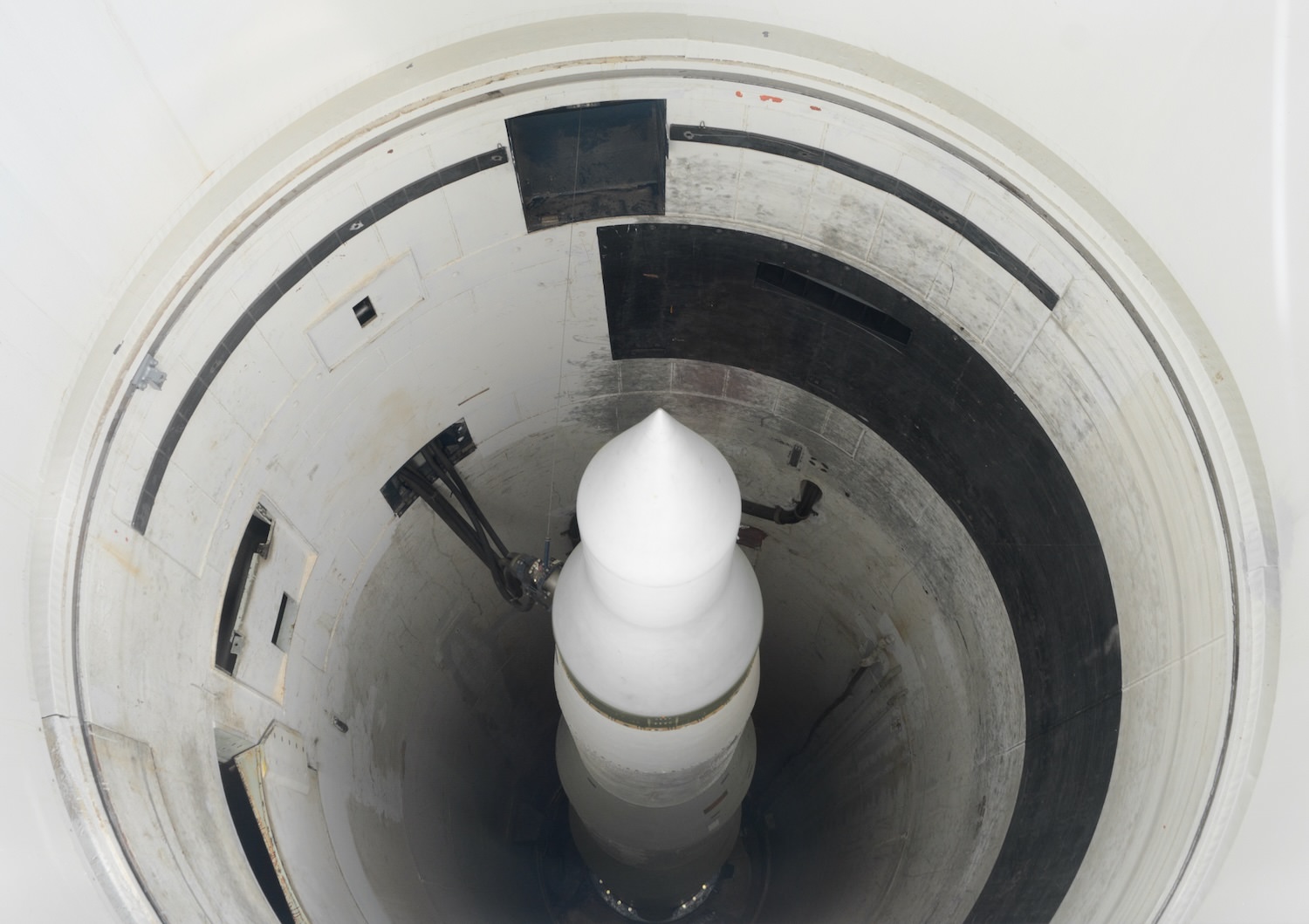On July 8th, the Defense Department announced that it was not going to terminate the Air Force’s troubled Sentinel intercontinental ballistic missile (ICBM), but would instead sink more taxpayer dollars into a weapons system estimated to cost $140.9 billion, an increase of 81% over an initial 2020 estimate of $77.7 billion.
The Sentinel ICBMs—with a price tag of $214 million per unit and counting—would replace the 450 aging Minuteman III weapons produced from 1970 to 1978. The Minuteman program itself faces serious environmental degradation issues that have sparked alarming morale and health concerns among launch personnel (dubbed “missileers”).
The Air Force was responding to a “critical breach” determination under the Nunn-McCurdy statute, requiring programs with a 37% or higher cost overrun to undergo a top-to-bottom restructuring and reassessment, including possible termination and evaluation of more cost-effective alternatives. Most of the Sentinel cost growth has not yet actually occurred, so this is an opportune time to cancel the program.
A June 17th House Appropriations Committee report warned that the “lack of continuity in program management for such a critical program as Sentinel is contributing to poor program performance, cost overruns and schedule slips.” Democrats on Capitol Hill demanded “an honest evaluation of the necessity of proceeding with this program now and at what cost we are willing to continue.”
In a July letter to President Biden and Congress opposing Sentinel, the Union of Concerned Scientists warned: “Past near misses, including false alarms, miscalculation, and misunderstanding, show how this high alert posture increases the risk of nuclear war.”
As opposition builds, the role of the ICBM leg of the US nuclear deterrent triad, complementing submarine-based and bomber-based nuclear weapon systems, is finally coming under scrutiny.
ICBM apologists have long reflected a Strangelovian, Cold War mentality. The Minuteman IIIs, dispersed and buried 60 feet deep in hardened silos, represented a clear challenge to any Soviet temptation to launch a disarming first nuclear strike. The rapid alert status of the ICBMs would give the President a few more minutes to decide whether to launch a thermonuclear World War III.
These hair-trigger capabilities no longer respond to post-Cold War US strategic priorities. The invulnerable submarine-launched ballistic missiles, coupled with recallable bombers, provide more than enough deterrent power to dissuade a Vladimir Putin or Xi Jinping from undertaking a reckless gamble risking the total destruction of his own country. In fact, an ICBM cancellation can be proffered to Russia and China as a first unilateral step to reinitiate strategic arms reduction talks.
The Minuteman IIIs are presently undergoing a costly and controversial overhaul, raising the question of the system’s continued viability as the Sentinel initial deployment date slips past 2030.
Adm. Charles Richard, the head of US Strategic Command, admitted in April 2021: “It is getting past the point of [where] it’s not cost-effective to life-extend Minuteman III. You’re quickly getting to the point [where] you can’t do it at all… That thing is so old that in some cases the [technical] drawings don’t exist anymore, or where we do have drawings, they’re like six generations behind the industry standard. And there’s not only [no one] working that can understand them — they’re not alive anymore.”
Beyond this mammoth brain drain, Minuteman III installations are plagued by deteriorating environmental conditions and health hazards that have resulted in cancer and other serious medical diagnoses affecting missileers.
With the Cold War ending, the Minuteman crews, mostly in their twenties, have suffered from morale, readiness, and recruitment issues that reflect the apocalyptic nature of their mission. The ICBMs are intentionally deployed in isolated bases in Montana, Wyoming, and North Dakota. Each pair of launch officers is buried in underground command capsules with control over 10 nearby ICBM silos. They work 24-hour shifts (often extended to 48 hours) and constantly monitor the readiness of their missiles. When ordered, they must agree to turn the launch keys and initiate nuclear Armageddon.
The Torchlight Initiative, a nonprofit run by missileers and their families, is pressuring the Air Force to address the high level of cancer and other diseases afflicting this military community. The Torchlight registry has identified over 650 missile community veterans with these medical conditions. Torchlight argues that these cases were related to missileer exposures to lead, volatile organic compounds, herbicides, pesticides, Polychlorinated Biphenyls (PCBs), and other toxins identified at missile sites. Many veterans and their families have been denied benefits or have struggled to receive benefits because of their inability to demonstrate a service connection to their illness.
Gen. Thomas Bussiere, commander of Air Force Global Strike Command, has directed “immediate measures to begin the cleanup process for the affected facilities and mitigate exposure by our airmen and Guardians to potentially hazardous conditions.” He has ordered a full-scale Missile Community Cancer Study.
Ironically, the ICBM superweapon is only sickening its own launch crews. The spiraling Sentinel cost overruns and delays, combined with the Minuteman environmental and personnel health revelations, should spell doom for the doomsday ICBM. It is time to turn the page on this costly vestige of Cold War thinking.
Dr. Rudney is a retired Senior Adviser in the US Department of the Air Force.






